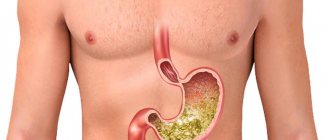Headache is one of the most common types of pain. It can be primary, i.e. not associated with any disease, and secondary, caused by disease or injury.
Headache may be accompanied by weakness, dizziness, increased fatigue, nausea, vomiting, fever, blurred vision, changes in blood pressure, appetite and sleep disturbances, muscle weakness, impaired coordination, speech, irritability, aggression, convulsions, loss of consciousness.
1.What is pain and how to cope with pain, acute and chronic pain
All people have felt pain at one time or another. The pain can range from mild to severe, appear once, be constant, or come and go periodically. There are many types of pain, and often pain is the first sign that something is wrong with the body.
Most often, doctors are consulted when acute pain or chronic pain occurs.
What is acute pain?
Acute pain begins suddenly and is usually described as sharp. It often serves as a warning about a disease or a possible threat to the body from external factors. Acute pain can be caused by many factors, such as:
- Medical procedures and surgery (without anesthesia);
- Bone fractures;
- Dental treatment;
- Burns and cuts;
- Childbirth in women;
Acute pain can be moderate and last literally seconds. But there is also severe acute pain that does not go away for weeks or even months. In most cases, acute pain is treated for no longer than six months. Typically, acute pain disappears when its main cause is eliminated - wounds are treated and injuries heal. But sometimes constant acute pain develops into chronic pain.
What is chronic pain?
Chronic pain is pain that lasts longer than three months. It even happens that the wounds that caused the pain have already healed or other provoking factors have been eliminated, but the pain still does not disappear. Pain signals can remain active in the nervous system for weeks, months, or even years. As a result, a person may experience pain-related physical and emotional conditions that interfere with normal life. The physical consequences of pain are muscle tension, low mobility and physical activity, and decreased appetite. At the emotional level, depression, anger, anxiety, and fear of re-injury appear.
Common types of chronic pain are:
- Headache;
- Abdominal pain;
- Back pain and in particular lower back pain;
- Pain in the side;
- Cancer pain;
- Arthritis pain;
- Neurogenic pain due to nerve damage;
- Psychogenic pain (pain that is not associated with past illnesses, injuries or any internal problems).
Chronic pain can begin after an injury or infection and for other reasons. But for some people, chronic pain is not associated with any injury or damage at all, and it is not always possible to explain why such chronic pain appears.
A must read! Help with treatment and hospitalization!
Types of headaches
Tension headache (TTH) is the most common type of headache. Its manifestation is most often associated with a person’s psychological state (stress, depression, anxiety) or physiological stress. TTH can occur due to work stress, lack of sleep, skipping meals, or excessive alcohol consumption. The frequency and duration of attacks (mild and moderate intensity) vary from person to person and can vary from person to person. TTH is characterized by a feeling of pressure in the eyes, bilateral compression in the occipital or frontal area, spreading to the entire head and neck. Typically, a person experiencing an attack of tension-type headache will complain that the head feels like it is being “wrapped in a hoop” or “squeezed in a vice.” Tension headache can be either episodic or chronic (per month, the frequency of attacks exceeds the number of days without headache).
Migraines are characterized by repeated attacks of moderate to high intensity throbbing pain (most often on one side of the head), which can last from 3-4 hours to several days. Most often, a migraine attack occurs spontaneously in the morning (after waking up), sometimes it develops “predictably” (for example, before menstruation or on weekends, after a busy work week). The condition may be accompanied by weakness, nausea, vomiting, sensitivity to light and sound, and pain may increase with movement, coughing, or sneezing. It is believed that migraine is caused by genetic causes, i.e. the predisposition to it is congenital (most people with migraine have close relatives with the same diagnosis). Women suffer from migraines several times more often than men.
Factors that contribute to the occurrence of migraines include: extreme fatigue, lack of sleep or, on the contrary, excessive sleep at night, stress, anxiety, hormonal changes in women (associated with pregnancy, menstruation, menopause), bright lights, flashing lights, loud noises, strong odors, sudden changes in weather or environmental conditions, vigorous exercise, smoking, irregular diet, excess coffee consumption, frequent use of migraine medications, certain foods, especially in combination with other triggers (chocolate, cheese, fruits, nuts, pickled foods, dried meats, sausages, yeast).
There are 4 phases of migraine:
- prodrome - the phase of migraine precursors, may be accompanied by inexplicable mood swings, high cravings for certain foods, euphoria, depression, neck stiffness, drowsiness;
- an aura (before a migraine attack or during its process) may be accompanied by “visual effects” - the appearance of blind spots, bright flashes of light, zigzag lines before the eyes, a person may feel muscle weakness, pay attention to impaired hearing, sensitivity;
- headache phase;
- the final phase - postdrome - lasts several hours (or days, like the prodrome), accompanied by weakness, fatigue, depression, and a feeling of emptiness.
The causes of cluster headaches are not exactly known; it is believed that a certain role in this process is played by the pathological activity of the hypothalamus, which regulates body temperature, blood pressure, the functioning of the endocrine system, as well as a sudden increased production of the immediate mediator of allergic reactions such as histamine or the neurotransmitter serotonin. This type of pain occurs less frequently than the above and is more typical for men. It is usually sudden, intense, unilateral, localized in the eye area, lasts from 30 to 90 minutes or longer, can occur every day (or several times a day) and last up to six weeks or more. This long period, in which cycles of headache attacks are followed by periods without headaches, is called a cluster period. Cluster headaches may be accompanied by watery eyes, red eyes, nasal congestion, and runny nose. It can be provoked by alcohol abuse, physical or psycho-emotional stress, and certain medications. Episodic cluster headaches, which occur regularly, lasting from one week to a year with remissions of at least one month, are more common. Chronic cluster pain occurs less frequently, lasts for one year or more, and remission lasts less than 1 month.
3.Diagnosis of pain
There are various methods to help determine the cause of pain. In addition to a general analysis of pain symptoms, special tests and studies may be performed:
- Computed tomography (CT);
- Magnetic resonance imaging (MRI);
- Discography (examination to diagnose back pain with the introduction of a contrast agent into the spinal disc);
- Myelogram (also done with the injection of a contrast agent into the spinal canal to enhance X-ray capabilities. The myelogram helps to see nerve compression caused by herniated discs or fractures);
- A bone scan to help identify bone problems due to infection, injury, or other causes;
- Ultrasound of internal organs.
About our clinic Chistye Prudy metro station Medintercom page!
Causes of secondary headaches
Causes of secondary headaches (associated with illness or injury) include:
- arterial hypertension;
- cerebrovascular diseases (ischemic stroke, hemorrhagic stroke, cerebral aneurysm);
- infectious diseases (meningitis, encephalitis, otitis media, sinusitis);
- hydrocephalus;
- idiopathic intracranial hypertension;
- head injuries;
- uncontrolled (excessive) use of medications;
- benign and malignant brain tumors.
4.Pain treatment
Depending on the severity of the pain and its causes, pain treatment may vary. Of course, you should not self-medicate, especially if the pain is severe or does not go away for a long time. Symptomatic treatment of pain
may include:
- Over-the-counter pain relievers, including muscle relaxants, antispasmodics, and some antidepressants;
- Nerve block (blocking a group of nerves with an injection of local anesthetic);
- Alternative methods of treating pain, such as acupuncture, hirudotherapy, apitherapy and others;
- Electrical stimulation;
- Physiotherapy;
- Surgical treatment of pain;
- Psychological help.
Some pain medications work better when they are combined with other pain treatments.
When should you see a doctor for a headache?
You should consult a doctor if headache attacks occur three or more times a week; painkillers do not relieve the condition; headache is severe, occurs during physical activity, bending, coughing; the intensity of the headache increases; headache occurred after a head injury or fall.
Get medical help right away if you experience any of the following: sudden, intense, severe headache; for headaches accompanied by neurological symptoms - weakness, dizziness, sudden loss of balance, loss of gait stability, tingling sensation, burning sensation on the skin, weakening or lack of sensitivity in an area of the body, disorientation, tremor, speech or vision disturbances, convulsions, loss of consciousness; for headaches accompanied by fever, shortness of breath, neck stiffness, rash, severe nausea or vomiting; the appearance of unusual headaches after the age of 55 years.
Pain and cancer
An oncology patient faces pain. After surgical manipulation and other types of treatment that cause damage to soft tissues, it is acute and can be different - dull, spastic, burning.
A cancer patient has to deal with the fact that he experiences different types of pain from different sources. This is due, for example, to organ damage by metastases.
Cancer pain is a consequence of a developing tumor. When metastases grow, they penetrate into surrounding healthy tissues and involve them in the oncological process. The pain caused by metastases travels as a signal to the brain.
However, metastases do not always cause pain immediately. Diseases of the lung tissue, liver, kidneys and especially bones are examples of this.
Recommendations for you and your loved ones
- The effect of taking the medicine can vary, much depends on your mood, time of day, presence of loved ones nearby, even on the weather. The approach to prescribing an anesthetic drug is individual.
- If chronic pain syndrome has intensified, do not rush to simultaneously use drugs from the same group to treat pain, for example, diclofenac and ibuprofen. This is unlikely to have any effect, but may cause adverse reactions.
- If sensitivity to a drug is lost, move on to a stronger drug, do not choose a drug that is similar in activity.
- If the anesthetic does not relieve pain at all after 12 hours, increase its dose or change the drug.
- The best is to take pills or rectal suppositories. Switch to injections if tablets are ineffective.
- In some cases, it is necessary to prescribe drugs with non-steroidal anti-inflammatory drugs.
- It is easier to prevent pain than to eliminate it, so take the drug before pain occurs.
We could give you a lot of other advice, but it would be better to do this when you contact the Onco.Rehab integrative oncology clinic
What are the types of pain?
Types of pain are distinguished by mechanisms of development, duration and other characteristics. First of all, pain is divided into 4 types2:
- Short-term (transient), which appears suddenly for a short period of time, goes away on its own and usually does not require treatment.
- Acute , most often caused by tissue damage. This is a normal response to excessive mechanical (pressure, compression, shock), thermal (very high or low temperature) or chemical stress. With this type of pain, the cause can be discovered fairly quickly. The main treatment is aimed at eliminating the consequences of the injury, and pain relief is an additional method.
- Subacute , which is diagnosed in cases where it lasts from 2 to 6 months. In this type of pain, the pain syndrome is largely due to the psychological component.
- Chronic , occurring in response to severe damage or when certain structures of the nervous system are involved in the process. It differs from acute pain not only by lasting more than 6 months, but also by the fact that the body cannot independently restore its functions. It includes neuralgia, headaches, muscle, pelvic and other pains3. The degree of severity of pain over time depends less and less on the strength of the damaging factor; it becomes increasingly difficult to establish an organic cause, and often even an in-depth examination does not produce results. Additional symptoms arise: sleep disturbances, appetite disorders, depressive feelings, attention disorders, memory disorders, etc. Patients often change painkillers, which no longer help. And the pain syndrome turns into an independent disease, the treatment of which depends on the type of pain.
Up to contents
How do we bear pain
There is never the same pain, because it is tolerated individually. Hope for a bright future and belief in recovery are very important for the perception of pain. This is exactly how it manifests itself weaker than in a patient who has lost all hope.
The time of day is also important. So at night the pain is worse because there are no distractions. Changes in atmospheric pressure and humidity also change our sensation of pain. Needless to say, our emotional state also changes our perception.
One thing is important: the pain we experience today is not like the pain of yesterday and tomorrow. The expectation of pain only intensifies it; the perception of pain is dictated by one’s own pain threshold of sensitivity, one’s own emotionality.
What other pain is there?
If we take acute pain, then there is a separate classification for it, where the main aspect of differentiation is localization:
- Superficial. We experience it when we damage the skin and mucous membranes. This pain is characterized by intensity, pulsation, and burning.
- Deep. Appears when the musculoskeletal system is damaged. As a rule, the pain is aching, and its location is more difficult to determine.
- The pain is visceral. Its companions are pathological processes in internal organs. Usually their character is unclear. This type of pain is characterized by dull pain, concomitant nausea, drop in blood pressure, severe sweating and some other manifestations.
- Reflected. This is a whole projection of pain onto specific areas of the skin associated with certain organs.
Bronchial obstruction in cancer
The International Association for the Study of Pain separately considers psychogenic pain associated with emotional or muscle strain, mental disorders, and depression.
Pain does not always occur at the site of injury. For example, with cancer of the gallbladder, pain is radiated to the collarbone, that is, referred pain occurs.
A patient suffering from acute pain must understand that it cannot last for months. Therefore, a positive attitude can be a consequence of this understanding. Many people perceive chronic pain as eternal, which, of course, is not entirely correct and affects mood for the worse.








